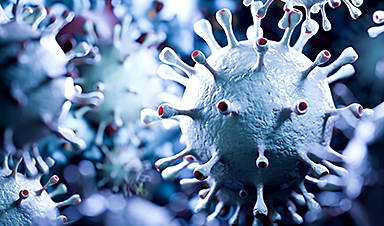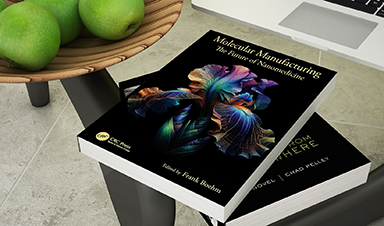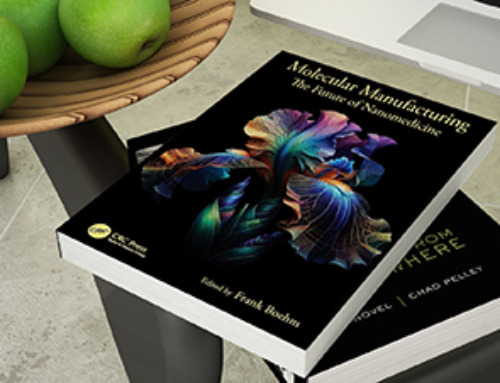Unlocking the secrets of COVID-19: a groundbreaking study reveals the intricate biomechanics behind the virus's evolution and spread.
Richard Feynman famously stated, "Everything that living things do can be understood in terms of the jigglings and wigglings of atoms." This week, Nature Nanotechnology features a groundbreaking study that sheds new light on the evolution of the coronavirus and its variants of concern by analyzing the behavior of atoms in the proteins at the interface between the virus and humans. The paper, titled "Single-molecule force stability of the SARS-CoV-2–ACE2 interface in variants-of-concern," is the result of an international collaborative effort among researchers from six universities across three countries.
Mechanical Stability of the Virus and Its Global Impact
The study introduces significant insights into the mechanical stability of the coronavirus, a key factor in its evolution into a global pandemic. The research team employed advanced computational simulations and magnetic tweezers technology to explore the biomechanical properties of biochemical bonds in the virus. Their findings reveal critical distinctions in the mechanical stability of various virus strains, highlighting how these differences contribute to the virus's aggressiveness and spread.
As the World Health Organization reports nearly 7 million deaths worldwide from COVID-19, with over 1 million in the United States alone, understanding these mechanics becomes crucial for developing effective interventions and treatments. The group emphasizes that comprehending the molecular intricacies of this pandemic is key to shaping our response to future viral outbreaks.
Key Contributions From Auburn University
Delving deeper into the study, the Auburn University team, led by Prof. Rafael C. Bernardi, Assistant Professor of Biophysics, along with Dr. Marcelo Melo and Dr. Priscila Gomes, played a pivotal role in the research by leveraging powerful computational analysis. Utilizing NVIDIA HGX-A100 nodes for GPU computing, their work was essential in unraveling complex aspects of the virus's behavior.
Prof. Bernardi, an NSF Career Award recipient, collaborated closely with Prof. Gaub from LMU, Germany, and Prof. Lipfert from Utrecht University, The Netherlands. Their collective expertise spanned various fields, culminating in a comprehensive understanding of the SARS-CoV-2 virulence factor. Their research demonstrates that the equilibrium binding affinity and mechanical stability of the virus–human interface are not always correlated, a finding crucial for comprehending the dynamics of viral spread and evolution.
Innovative Techniques and Findings on Virus Strains
Additionally, the team's use of magnetic tweezers to study the force-stability and bond kinetics of the SARS-CoV-2:ACE2 interface in various virus strains provides new perspectives on predicting mutations and adjusting therapeutic strategies. The methodology is unique because it measures how strongly the virus binds to the ACE2 receptor, a key entry point into human cells, under conditions that mimic the human respiratory tract.
The group found that while all the major COVID-19 variants (like Alpha, Beta, Gamma, Delta, and Omicron) bind more strongly to human cells than the original virus, the Alpha variant is particularly stable in its binding. This might explain why it spread so quickly in populations without prior immunity to COVID-19. The results also suggest that other variants, like Beta and Gamma, evolved in a way that helps them evade some immune responses, which might give them an advantage in areas where people have some immunity, either from previous infections or vaccinations.
Implications for Understanding and Responding to Variants
Interestingly, the Delta and Omicron variants, which became dominant worldwide, show traits that help them escape immune defenses and possibly spread more easily. However, they don't necessarily bind more strongly than other variants. Prof. Bernardi says that "This research is important because it helps us understand why some COVID-19 variants spread more quickly than others. By studying the virus's binding mechanism, we can predict which variants might become more prevalent and prepare better responses to them."
This research emphasizes the importance of biomechanics in understanding viral pathogenesis and opens new avenues for scientific investigation into viral evolution and therapeutic development. It stands as a testament to the collaborative nature of scientific research in addressing significant health challenges.
Reference: "Single-molecule force stability of the SARS-CoV-2–ACE2 interface in variants-of-concern" by Magnus S. Bauer, Sophia Gruber, Adina Hausch, Marcelo C. R. Melo, Priscila S. F. C. Gomes, Thomas Nicolaus, Lukas F. Milles, Hermann E. Gaub, Rafael C. Bernardi and Jan Lipfert, 27 November 2023, Nature Nanotechnology.
DOI: 10.1038/s41565-023-01536-7
News
Two New Books From Frank Boehm, NA Founder – To be Released Dec. 2025
Molecular Manufacturing: The Future of Nanomedicine This book explores the revolutionary potential of atomically precise manufacturing technologies to transform global healthcare, as well as practically every other sector across society. This forward-thinking volume examines [...]
What could the future of nanoscience look like?
Society has a lot to thank for nanoscience. From improved health monitoring to reducing the size of electronics, scientists’ ability to delve deeper and better understand chemistry at the nanoscale has opened up numerous [...]
Scientists Melt Cancer’s Hidden “Power Hubs” and Stop Tumor Growth
Researchers discovered that in a rare kidney cancer, RNA builds droplet-like hubs that act as growth control centers inside tumor cells. By engineering a molecular switch to dissolve these hubs, they were able to halt cancer [...]
Platelet-inspired nanoparticles could improve treatment of inflammatory diseases
Scientists have developed platelet-inspired nanoparticles that deliver anti-inflammatory drugs directly to brain-computer interface implants, doubling their effectiveness. Scientists have found a way to improve the performance of brain-computer interface (BCI) electrodes by delivering anti-inflammatory drugs directly [...]
After 150 years, a new chapter in cancer therapy is finally beginning
For decades, researchers have been looking for ways to destroy cancer cells in a targeted manner without further weakening the body. But for many patients whose immune system is severely impaired by chemotherapy or radiation, [...]
Older chemical libraries show promise for fighting resistant strains of COVID-19 virus
SARS‑CoV‑2, the virus that causes COVID-19, continues to mutate, with some newer strains becoming less responsive to current antiviral treatments like Paxlovid. Now, University of California San Diego scientists and an international team of [...]
Lower doses of immunotherapy for skin cancer give better results, study suggests
According to a new study, lower doses of approved immunotherapy for malignant melanoma can give better results against tumors, while reducing side effects. This is reported by researchers at Karolinska Institutet in the Journal of the National [...]
Researchers highlight five pathways through which microplastics can harm the brain
Microplastics could be fueling neurodegenerative diseases like Alzheimer's and Parkinson's, with a new study highlighting five ways microplastics can trigger inflammation and damage in the brain. More than 57 million people live with dementia, [...]
Tiny Metal Nanodots Obliterate Cancer Cells While Largely Sparing Healthy Tissue
Scientists have developed tiny metal-oxide particles that push cancer cells past their stress limits while sparing healthy tissue. An international team led by RMIT University has developed tiny particles called nanodots, crafted from a metallic compound, [...]
Gold Nanoclusters Could Supercharge Quantum Computers
Researchers found that gold “super atoms” can behave like the atoms in top-tier quantum systems—only far easier to scale. These tiny clusters can be customized at the molecular level, offering a powerful, tunable foundation [...]
A single shot of HPV vaccine may be enough to fight cervical cancer, study finds
WASHINGTON -- A single HPV vaccination appears just as effective as two doses at preventing the viral infection that causes cervical cancer, researchers reported Wednesday. HPV, or human papillomavirus, is very common and spread [...]
New technique overcomes technological barrier in 3D brain imaging
Scientists at the Swiss Light Source SLS have succeeded in mapping a piece of brain tissue in 3D at unprecedented resolution using X-rays, non-destructively. The breakthrough overcomes a long-standing technological barrier that had limited [...]
Scientists Uncover Hidden Blood Pattern in Long COVID
Researchers found persistent microclot and NET structures in Long COVID blood that may explain long-lasting symptoms. Researchers examining Long COVID have identified a structural connection between circulating microclots and neutrophil extracellular traps (NETs). The [...]
This Cellular Trick Helps Cancer Spread, but Could Also Stop It
Groups of normal cbiells can sense far into their surroundings, helping explain cancer cell migration. Understanding this ability could lead to new ways to limit tumor spread. The tale of the princess and the [...]
New mRNA therapy targets drug-resistant pneumonia
Bacteria that multiply on surfaces are a major headache in health care when they gain a foothold on, for example, implants or in catheters. Researchers at Chalmers University of Technology in Sweden have found [...]
Current Heart Health Guidelines Are Failing To Catch a Deadly Genetic Killer
New research reveals that standard screening misses most people with a common inherited cholesterol disorder. A Mayo Clinic study reports that current genetic screening guidelines overlook most people who have familial hypercholesterolemia, an inherited disorder that [...]





















